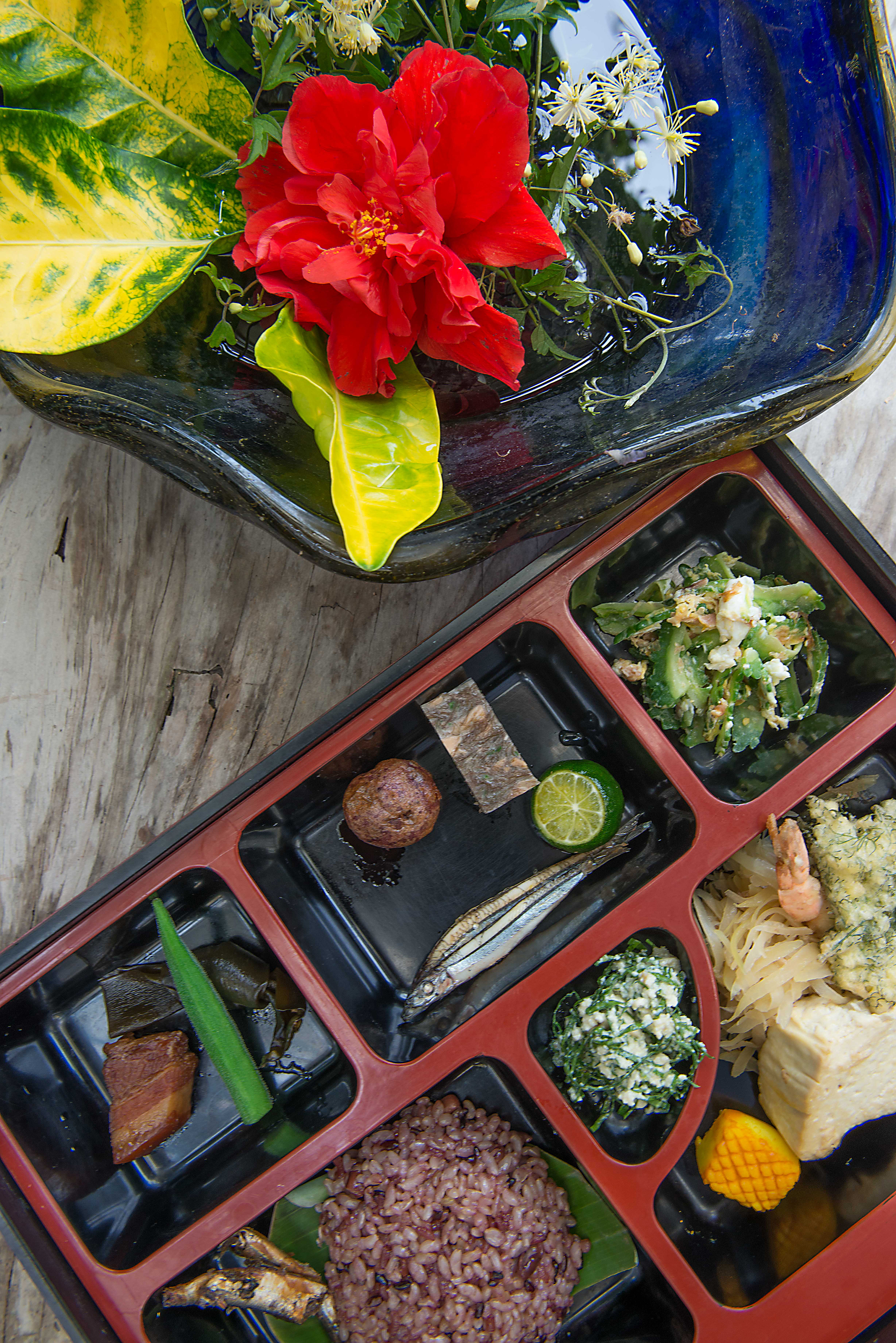The view that, if there is a Garden of Eternal Life, it is likely located in Okinawa, may be a touch exaggerated but few places offer better models for the correlation between food, health and longevity than Japan's southern islands.
"Being Okinawan, being different," Donald Richie wrote, "makes for vitality." Part of that vitality comes from elements found in its indigenous cuisine. Deriving from the Chinese notion that the same principals apply to both medical treatment and daily diet, Okinawans use the term "nuchi gusui" to define their traditional cuisine, "nuchi" denoting life, "gusui," medicine.
The Okinawan diet stems in part from an inherent resourcefulness developed in periods of extreme poverty. During shortages, Okinawans resorted to famine foods such as cycad nuts and the pineapple-like fruit of the panadanus, or adan tree. Both required toxins to be carefully leached out before they could be consumed. The resilient sweet potato was brought to Okinawa after a tributary mission to China in 1605. The humble tuber, rich in flavonoids, fiber, lycopene, carotenoids and vitamin E, saved many Okinawans from malnutrition.


















With your current subscription plan you can comment on stories. However, before writing your first comment, please create a display name in the Profile section of your subscriber account page.